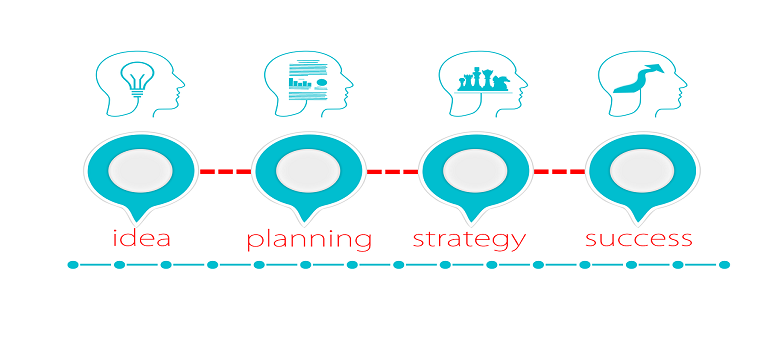
Set Goals in Life: When businesses and people embark on any form of initiative, they should establish goals. Before engaging on any endeavor or project, you need to, at the very least formulate a precise target in mind; otherwise, you will be meandering aimlessly and would have no way of knowing whether the path you are on is the correct one.
To aid in this endeavour, we give seven straightforward methods for accurately defining objectives so that they become attainable goals.
How to Set Goals in Life

Step 1: Identify the Objective
Although it may seem easy to set goals in life, the following key features of objective identification are frequently overlooked:
- The objectives selected should be SMART: Specific(S), Measurable(M), Achievable(A), Relevant(R), Time-Bound(T).
- The objectives should be positively established.
SMART
The first part, SMART objectives, is critical when creating goals for a project. It is insufficient to show that this or that development would bring revenues. We must be very explicit about the outcome we desire. For instance, the precise amount of profit that will be made.
Additionally, the goals and targets must be quantifiable. For instance, simply stating that market share will increase is insufficient. To create an objective effectively, it is vital to determine how much market share will increase and which categories will be impacted.
Similarly, targets must be defined in such a way that we are confident they can be met or exceeded based on the market’s and company’s characteristics and conditions.
Prioritization
Depending on their purpose, goals may have hierarchies or categories. There are broad objectives that apply to the entire organisation and will be connected to the organization’s object, vision, mission, and economic activities. These objectives will be highly significant if they are connected to the critical or strategic concerns that will determine the company’s overall performance.
Other more specialised ones can be formed by area and benefit only a portion of the business. These precise objectives will also be significant largely to set goals in life as they pertain to the most critical strategic concerns in the respective domains. Prioritize your list of subjects to identify which are the most important. One way to accomplish this is by the application of the Pareto principle.
Finally, the target must include a time constraint, ensuring that the defined goals can be met within specified maximum durations. This arbitrary term is also required to track progress toward reaching the action plan’s targets and timeframes.
The other factor highlighted in the objective identification process is the emphasis on the events you wish to occur in order to establish it positively. For instance, “a profit of $100,000 in the third quarter will enable our stock price to increase by 5%.” Thus, the importance of achieving the target is highlighted.
Keeping these SMART aspects in mind will help you design objectives intelligently.
Step 2: Jot down the benefits of the objectives
After establishing the objectives, we assess the benefits that will accrue to the organisation, its workers, its shareholders, its clients, its suppliers, and all other agents with whom it interacts. By achieving targets, you will be taking steps toward a more favourable state, whether it be in terms of inventory levels, annual sales, or waste reduction in operations.
Regardless of the region in which goals are formed, there will always be rewards and someone who receives them. These can be generic, but if they are specific, they must be identified and listed to make them known to people who will benefit, as well as to the organisation as a whole.
Step 3: Temporary time organization
After completing the first two processes, time constraints should be established for the accomplishment of each aim and, consequently, for its follow-up. When a specific time frame is defined, a sense of urgency is produced to carry out the actions. It is recommended to work daily on short projects of up to 120 days, whereas weekly or bi-monthly work is acceptable for larger projects.
It is appropriate to build schedules that enable the target to be divided into manageable chunks that correspond to logical stages to follow. Thus, the prospect of believing that the ultimate objective will not be attained is eliminated, as it will be working on a daily basis to accomplish smaller goals that, when added together, will enable the ultimate goal to be accomplished.
For instance, if we begin a project to cut expenses in a manufacturing facility with a three-month timeframe and the purpose of saving $150 million after three months, it will be less overwhelming if we aim to save $50 million per month, $25 bi-weekly, 12.5 weekly, and 1.67 daily.
Step 4: Identify the critical obstacles
If you want to accomplish something, you must first understand the potential obstacles that may arise along the route; otherwise, you will be unable to devise plans or advance tactics to overcome them. It is consequently critical to establish and manage potential risks by initiating activities, processes, and habitual routines that limit or eliminate the likelihood of any risk.
Step 5: Identify the skills and knowledge required

Given that the procedures to be taken and the challenges to be encountered are understood, it is vital to ascertain the abilities and knowledge of persons who will develop the project. It is not necessary for the project manager to be an expert in every field. What you do need is the capacity to locate the information you seek and the ability to recognise the necessary skills and knowledge.
Step 6: Identify the individuals to work with
If you approach the appropriate individuals, you will discover the appropriate solution. For instance, if one wishes to increase production levels, the obvious candidates to progress the project are the plant’s employees.
If you want to increase your sales, the sales staff, commercial management, and customer service department should all work together to accomplish this. This is critical for the achievement of the stated goal.
Step 7: Develop a plan of action
Goals will not be accomplished simply by defining them precisely or by identifying the obstacles to overcome. The set objectives and specified goals will be accomplished if a prudent action plan is followed in conjunction with a deadline. Numerous jobs that must be completed will need to be broken into these seven steps and transformed into little targets.
The reality is that an action plan is everyday work carried out under predetermined conditions that consider everything from the activities to be completed, the time allotted for them, the people who will carry them out, to the contingencies that may emerge and their probable resolutions.
Also Read: 5 Best Practices and Skills needed for an Effective People Management!